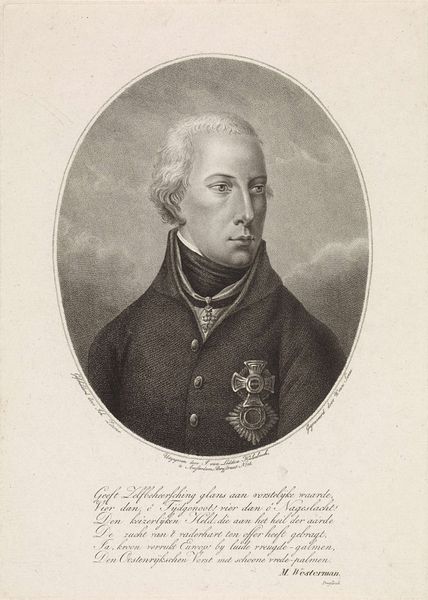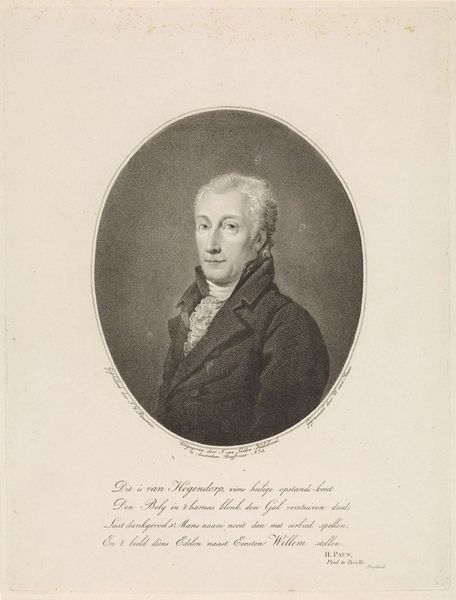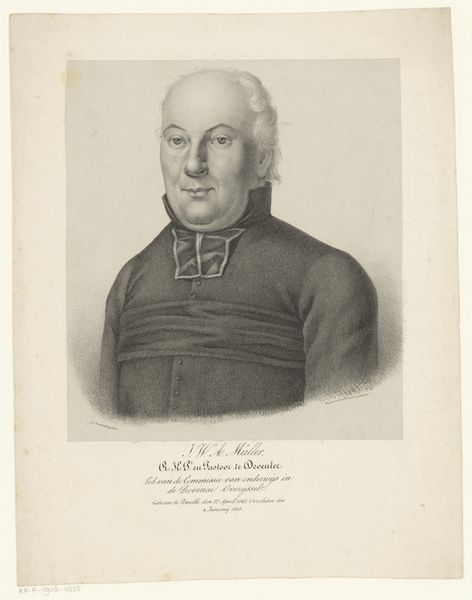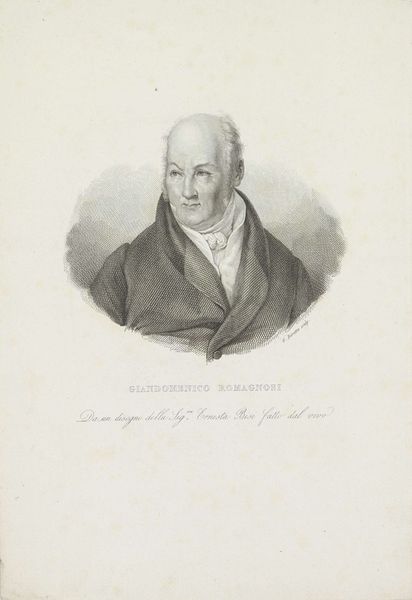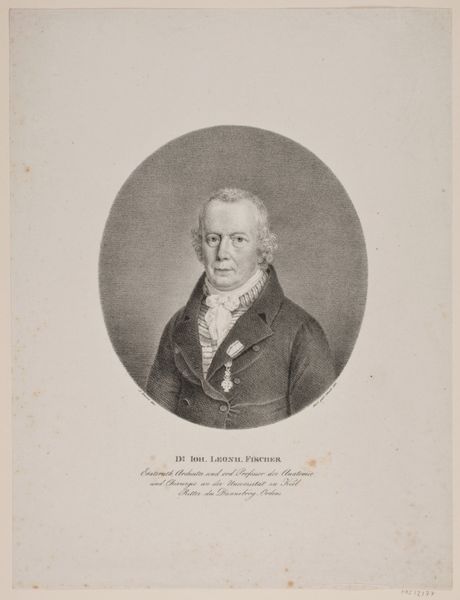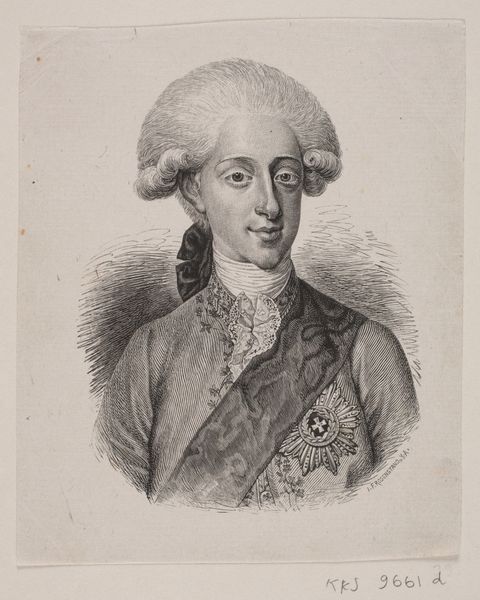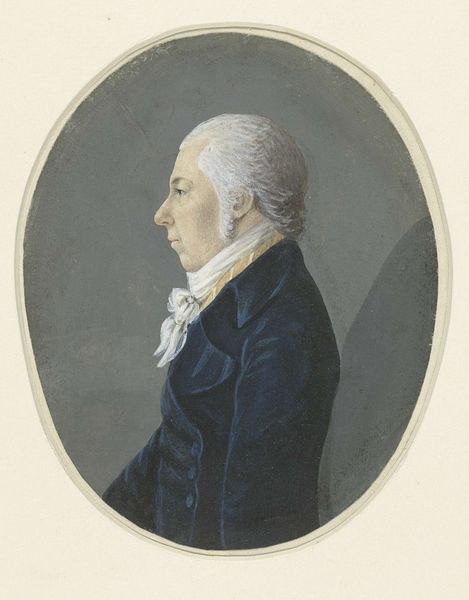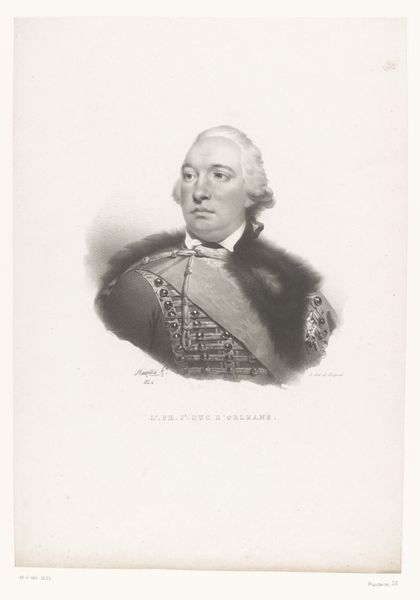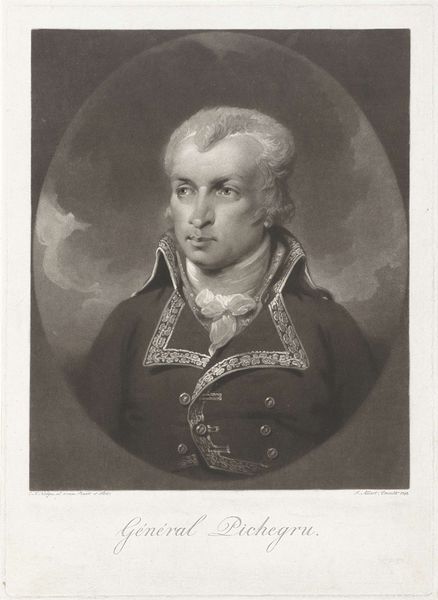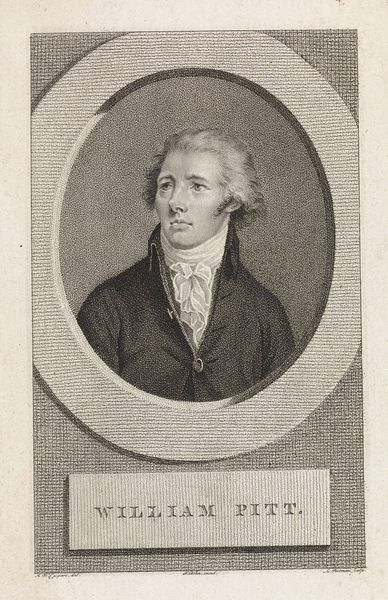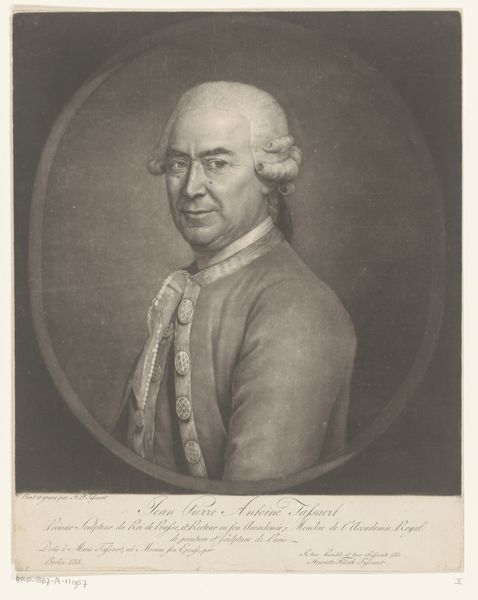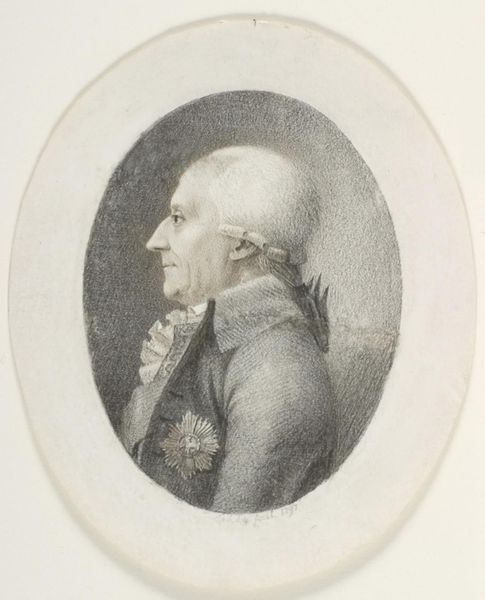
#
portrait
#
neoclacissism
# print
#
history-painting
Dimensions: height 256 mm, width 206 mm
Copyright: Rijks Museum: Open Domain
Willem van Senus made this portrait of Francis II, Holy Roman Emperor, using an engraving technique. The image presents us with the problem of understanding the public role of art in the late 18th and early 19th centuries. It was a time when powerful rulers were attempting to recover their authority in the wake of the French Revolution. The portrait commissions they granted were a part of this project. Here, Francis is presented as a stern, but enlightened leader, wearing simple garb, but decorated with subtle signifiers of power. Engravings such as this would have been reproduced and distributed widely, and it would be interesting to understand how they were consumed. Researching archives of printed images and institutional records could shed light on the social and political uses of such portraits. Approaching the artwork in this way helps us understand how art is shaped by prevailing social conditions and power structures.
Comments
No comments
Be the first to comment and join the conversation on the ultimate creative platform.
